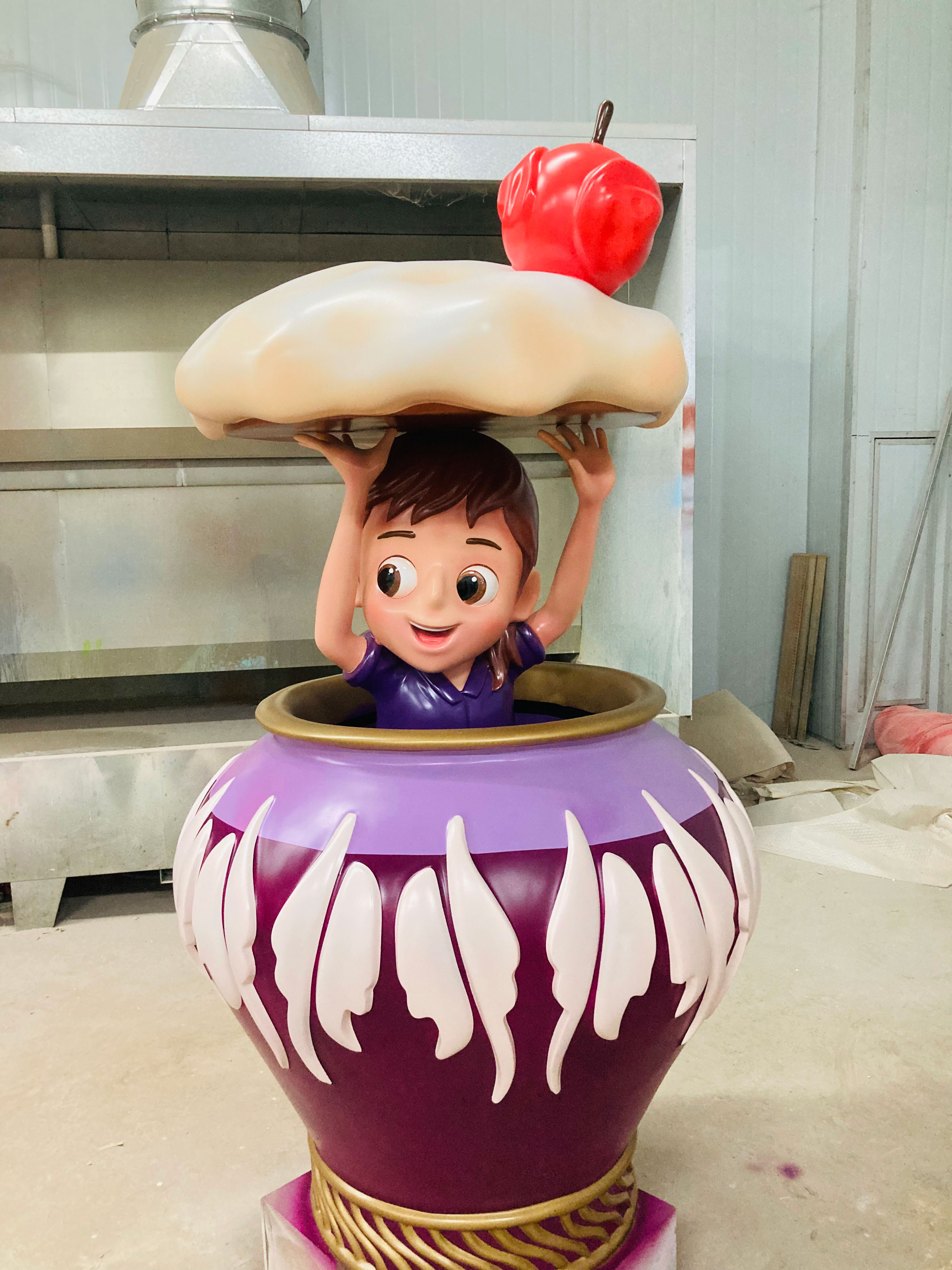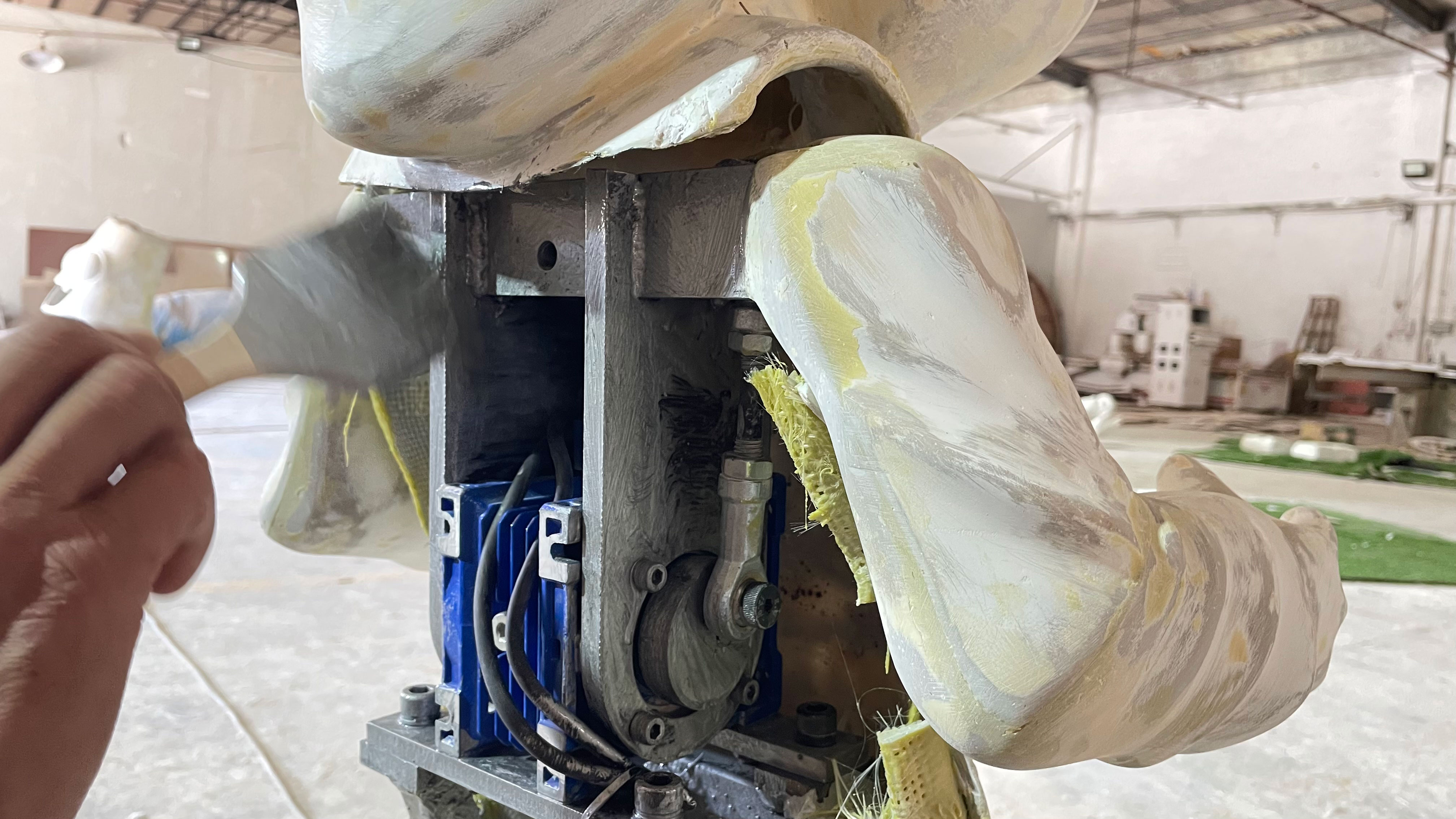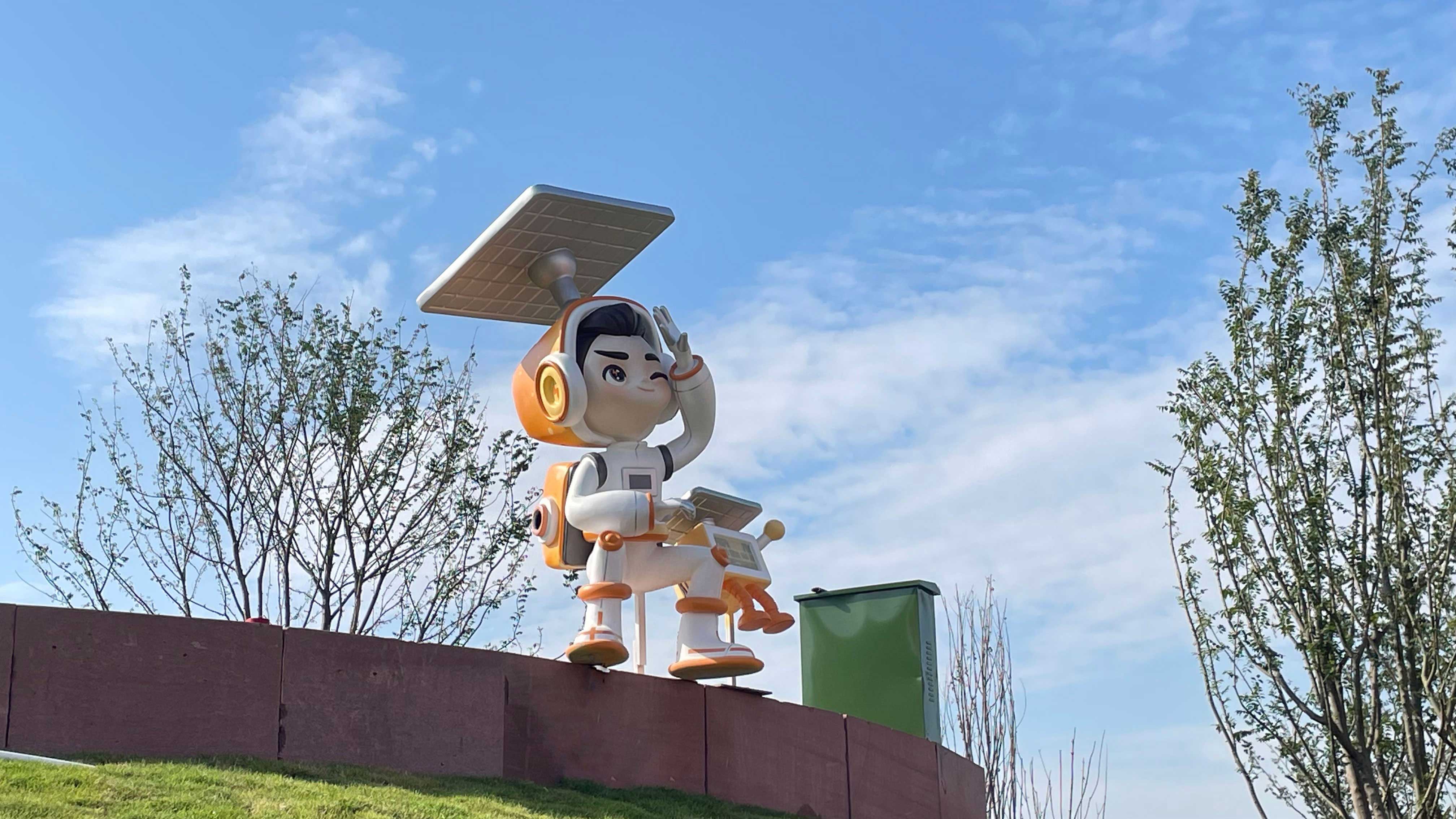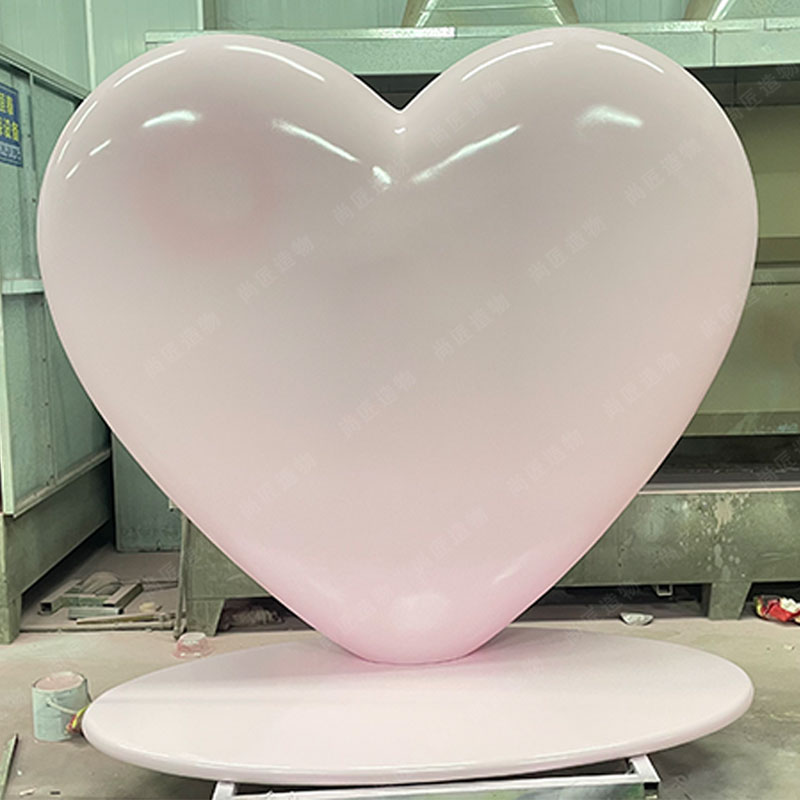Key Takeaways
Lightweight fiberglass statues represent a paradigm shift in architectural design, offering structural enhancements that traditional materials struggle to match. Their composite composition ensures exceptional durability while maintaining a fraction of the weight of stone or metal, making them ideal for both new constructions and retrofitting historic buildings. Unlike conventional sculptures, fiberglass resists corrosion, UV degradation, and temperature fluctuations, ensuring decades of aesthetic and functional integrity.
Architects increasingly favor fiberglass for its versatility—complex geometries and intricate details, once impractical with heavier mediums, are now achievable without compromising load-bearing walls or foundations. Realistic sculpture designs benefit particularly from this innovation, as fiberglass captures fine textures while enduring harsh climates. The material’s inherent strength-to-weight ratio also reduces installation costs, enabling larger-scale artistic installations in public spaces and private developments alike.
Moreover, fiberglass statuary supports sustainable practices through longevity and reduced transportation emissions. Its adaptability fosters creative collaborations between engineers and artists, bridging aesthetic vision with structural pragmatism. As urban landscapes evolve, these statues serve as both functional enhancements and enduring cultural markers, proving that modern architecture need not sacrifice artistry for resilience.

Lightweight Fiberglass Statues: Architectural Durability Redefined
Modern architecture increasingly demands materials that balance aesthetic appeal with structural resilience. Fiberglass statues have emerged as a groundbreaking solution, offering 40% less weight than traditional bronze or stone counterparts while maintaining exceptional durability. This innovation allows architects to incorporate intricate designs into building facades, rooftops, and public spaces without compromising load-bearing integrity.
"Fiberglass redefines what's possible in architectural ornamentation by merging artistic freedom with engineering precision," notes a lead designer at Royal Corinthian.
Key advantages of fiberglass statues include:
| Property | Fiberglass Statues | Traditional Materials |
|---|---|---|
| Weight (per cubic ft) | 2.5–3.5 lbs | 12–18 lbs |
| Weather Resistance | High | Moderate to Low |
| Maintenance Frequency | Every 8–10 years | Every 3–5 years |
The material’s layered construction—combining resin, glass fibers, and UV-resistant coatings—enables it to withstand extreme temperatures (-40°F to 180°F) and resist corrosion. For projects requiring both decorative and functional elements, fiberglass offers unmatched versatility.
Tip: Pair fiberglass statues with complementary materials like stainless steel sculpture accents to create dynamic visual contrasts in outdoor spaces.
By integrating these statues into architectural plans, designers achieve timeless structures that endure decades of environmental stress while retaining their artistic detail. This shift toward lightweight, durable materials reflects a broader industry prioritization of sustainability and long-term value.

Weather-Resistant Fiberglass Sculptures for Lasting Beauty
Fiberglass sculptures have emerged as a premier choice for architects and designers seeking durable, low-maintenance solutions for outdoor spaces. Unlike traditional materials like stone or bronze, fiberglass resists corrosion, UV damage, and temperature fluctuations, ensuring structural integrity and visual appeal for decades. Its non-porous surface prevents moisture absorption, a critical feature for preventing cracks or discoloration in humid or rainy climates. This makes fiberglass ideal for coastal installations, public parks, or urban landscapes where exposure to harsh elements is unavoidable.
Advanced manufacturing techniques allow for precise replication of intricate textures, from weathered stone to polished metal, without sacrificing the material’s inherent lightweight properties. IP character sculpture designs, for instance, demonstrate how fiberglass can capture lifelike details while remaining resilient against environmental stressors. The material’s flexibility also supports customization, enabling seamless integration into diverse architectural styles—from classical facades to modern minimalist structures. By combining aesthetic versatility with engineered durability, fiberglass sculptures offer a practical yet artistic solution for enhancing buildings and outdoor spaces in ways that withstand both time and nature.
Crafting Timeless Structures with Fiberglass Statuary Art
Fiberglass statuary art has emerged as a transformative medium for architectural design, offering a unique balance of aesthetic sophistication and functional resilience. Unlike traditional materials such as stone or bronze, fiberglass combines lightweight properties with exceptional durability, enabling the creation of intricate designs without compromising structural integrity. This adaptability allows architects to incorporate large-scale sculptures into building facades, courtyards, and public spaces, where weight restrictions or environmental factors might limit other materials.
The corrosion-resistant nature of fiberglass ensures longevity in diverse climates, from coastal regions prone to saltwater exposure to urban environments with fluctuating temperatures. Modern manufacturing techniques, including precision molding and UV-resistant coatings, further enhance its ability to retain color and detail over decades. For instance, kinetic sculptures crafted from fiberglass demonstrate how dynamic art can coexist with architectural durability, resisting wear while maintaining fluid movement.
Architects and designers increasingly leverage fiberglass to merge artistic expression with practical enhancements, such as load-bearing columns adorned with relief carvings or rooftop installations that double as wind-resistant features. By prioritizing both form and function, fiberglass statuary art redefines how structures achieve timelessness—proving that beauty and resilience are not mutually exclusive in architectural innovation.
Architectural Excellence Through Lightweight Fiberglass Design
The integration of lightweight fiberglass statues into architectural projects represents a paradigm shift in balancing structural efficiency with artistic ambition. Unlike traditional materials such as stone or bronze, fiberglass offers architects and designers unparalleled flexibility in scaling intricate designs without compromising load-bearing considerations. Its high strength-to-weight ratio enables the creation of large-scale sculptural elements—from ornamental facades to rooftop installations—that enhance visual impact while minimizing stress on building frameworks.
Advanced molding techniques allow fiberglass to replicate textures like weathered stone or polished metal, ensuring aesthetic continuity with existing architectural styles. For example, Cartoon sculpture projects benefit from fiberglass’s adaptability, enabling playful, oversized installations that remain structurally sound in public spaces. Additionally, the material’s resistance to thermal expansion and corrosion ensures long-term stability in diverse climates, aligning with modern demands for sustainable, low-maintenance building solutions. By merging engineering precision with creative freedom, fiberglass statues are redefining how architecture harmonizes form, function, and endurance.

Enhancing Buildings with Durable Fiberglass Artistic Elements
Architectural design thrives when functionality merges seamlessly with artistry, and fiberglass sculpture offers a compelling solution for this balance. Lightweight yet remarkably durable, fiberglass statues enable architects and designers to integrate intricate artistic elements without compromising structural integrity. Unlike traditional materials like stone or metal, fiberglass resists corrosion, UV degradation, and temperature fluctuations, ensuring long-term preservation of aesthetic details even in harsh outdoor environments.
These statues can be customized to mirror historical motifs or modern abstract forms, making them versatile for enhancing facades, rooftops, or entryways. For instance, ornate cornices or sculpted columns crafted from fiberglass add visual depth while maintaining a fraction of the weight of conventional alternatives. This adaptability reduces load stress on buildings, a critical factor in both new constructions and heritage renovations. Additionally, the material’s moldability allows for precise replication of textures, from weathered stone to polished finishes, ensuring cohesive integration with existing architectural styles. By combining artistic expression with engineering resilience, fiberglass statues serve as enduring enhancements that elevate both the form and function of built environments.
Fiberglass Statues: Combining Aesthetics and Structural Resilience
Fiberglass statues have emerged as a versatile solution for architects and designers seeking to harmonize visual appeal with long-term structural performance. Unlike traditional materials such as stone or bronze, fiberglass offers a unique combination of malleability and strength, allowing for intricate artistic details without compromising durability. This balance is critical in architectural applications, where decorative elements must withstand environmental stressors like UV exposure, temperature fluctuations, and moisture.
The material’s lightweight nature simplifies installation and reduces load-bearing demands on structures, making it ideal for both new constructions and retrofits. At the same time, advanced resin coatings enhance surface resilience, preserving color vibranty and texture integrity over decades. For instance, architectural cornices or façade sculptures crafted from fiberglass maintain their aesthetic sharpness even in coastal or high-humidity environments.
By integrating fiberglass statuary into building designs, professionals achieve dual objectives: elevating visual narratives through customizable forms while ensuring these elements contribute to the building’s structural longevity. This synergy between artistry and engineering underscores fiberglass’s growing role in modern architecture, where innovation in material science meets timeless design aspirations.

Innovative Fiberglass Solutions for Outdoor Architectural Decor
Fiberglass has emerged as a transformative material for outdoor architectural decor, offering a unique balance of functionality and artistic expression. Its lightweight composition simplifies installation in complex structural designs, while its inherent durability ensures resistance to environmental stressors like UV radiation, temperature fluctuations, and moisture. This adaptability makes fiberglass statues ideal for enhancing facades, gardens, and public spaces without compromising structural integrity.
Modern manufacturing techniques allow for intricate detailing, replicating traditional materials like stone or bronze while avoiding their maintenance challenges. Architects and designers increasingly favor fiberglass for its versatility in creating custom shapes, textures, and finishes that align with specific aesthetic visions. For instance, Royal Corinthian’s fibercraft integrates corrosion-resistant coatings and reinforced layers, extending the lifespan of decorative elements in coastal or high-humidity environments.
Beyond practicality, fiberglass supports sustainable design by reducing material waste during production and enabling long-term reuse. Its compatibility with modern adhesives and anchoring systems further streamlines integration into both historical renovations and contemporary projects. As urban landscapes evolve, fiberglass statues provide a cost-effective solution for merging artistic grandeur with architectural resilience, ensuring visual impact across generations.

Royal Corinthian’s Fibercraft: Durability Meets Artistic Precision
Royal Corinthian’s expertise in fiberglass statuary lies in its ability to harmonize structural resilience with intricate design. Unlike traditional materials, fiberglass offers unmatched versatility, allowing artisans to replicate delicate textures—from flowing drapery to lifelike foliage—without compromising durability. This precision is achieved through advanced molding techniques, where layers of resin-coated fiberglass are meticulously shaped and cured to withstand harsh environmental stressors, including UV exposure, temperature fluctuations, and moisture.
The company’s commitment to artistic integrity ensures that each piece serves both aesthetic and functional roles in architectural projects. For instance, decorative cornices or ornamental facades crafted by Royal Corinthian not only enhance visual appeal but also contribute to long-term structural stability. By integrating lightweight properties with reinforced fiber matrices, these statues reduce load-bearing demands on buildings while maintaining dimensional accuracy over decades.
This balance of craftsmanship and engineering aligns with modern architectural demands, where sustainability and longevity are paramount. Architects and designers increasingly turn to fiberglass solutions for projects requiring detailed artistry that endures beyond seasonal wear, proving that functional materials can elevate, rather than constrain, creative expression.
Conclusion
Lightweight durable fiberglass statues represent a transformative approach to architectural and decorative design, merging practicality with artistic vision. Their resistance to weathering ensures that structural enhancements maintain visual appeal over decades, even in harsh environments. Unlike traditional materials, fiberglass offers designers the freedom to create intricate, large-scale installations without compromising structural integrity. This adaptability makes it an ideal choice for projects ranging from historical restorations to modern urban landscapes.
Royal Corinthian’s expertise in fibercraft demonstrates how advanced material engineering can elevate both form and function. By prioritizing precision in fabrication, their statues serve not merely as ornaments but as integral components of architectural storytelling. As cities and institutions seek sustainable, long-lasting solutions, fiberglass statuary stands out for its ability to harmonize aesthetic ambition with enduring performance. Ultimately, this innovation redefines what is possible in blending art with architecture, offering a blueprint for future projects that demand resilience without sacrificing creativity.

Frequently Asked Questions
What makes fiberglass statues a superior choice for architectural projects?
Fiberglass combines exceptional strength with low weight, allowing intricate designs without compromising structural integrity. Its resistance to corrosion and environmental stress ensures longevity in diverse climates.
How do weather-resistant properties enhance fiberglass sculptures' durability?
Advanced resin coatings and UV inhibitors protect against fading, cracking, and moisture damage. This makes fiberglass ideal for outdoor installations, maintaining aesthetic appeal despite prolonged exposure to sun, rain, or snow.
Can fiberglass statues replicate traditional materials like stone or bronze?
Yes, specialized finishing techniques enable realistic textures and patinas. This versatility allows architects to achieve classical aesthetics while benefiting from modern material advantages such as reduced weight and easier installation.
Are lightweight fiberglass statues suitable for large-scale architectural installations?
Absolutely. Their high strength-to-weight ratio simplifies mounting on roofs, facades, or gardens. Prefabricated components also streamline assembly, minimizing onsite labor and structural reinforcement needs.
What maintenance do fiberglass architectural elements require?
Routine cleaning with mild soap and water suffices. Annual inspections for surface coatings ensure continued protection against environmental wear, preserving both functionality and visual quality.
How does Royal Corinthian ensure artistic precision in fiberglass designs?
Collaborations with master sculptors and CAD-driven prototyping guarantee detail accuracy. Rigorous quality checks further align each piece with architectural specifications and artistic intent.
 ch
ch English
English





